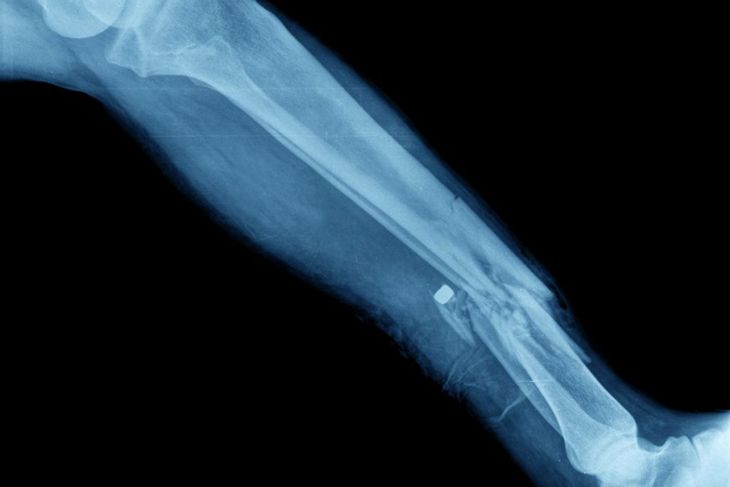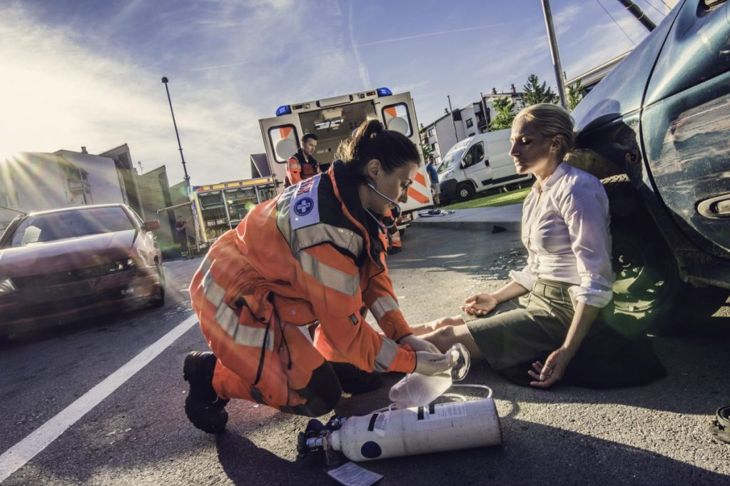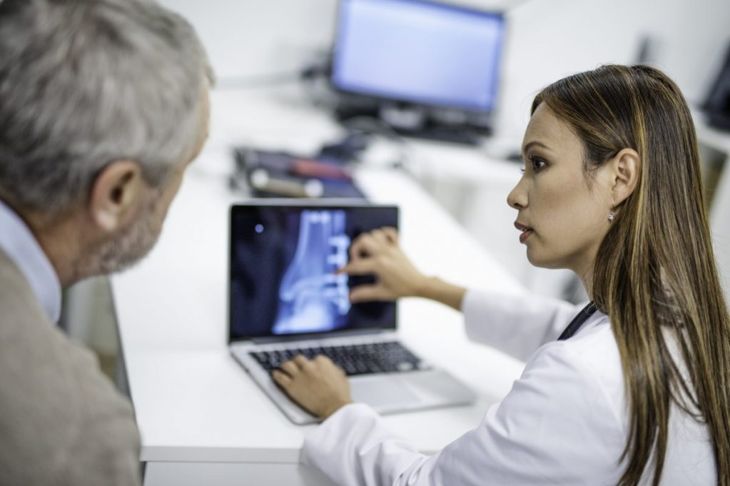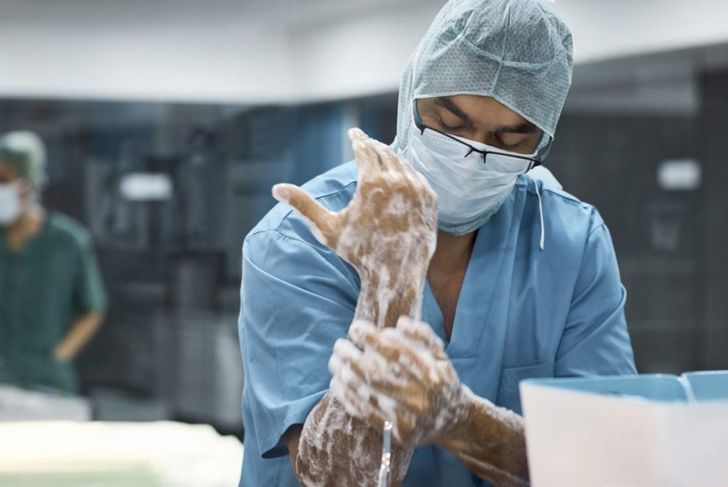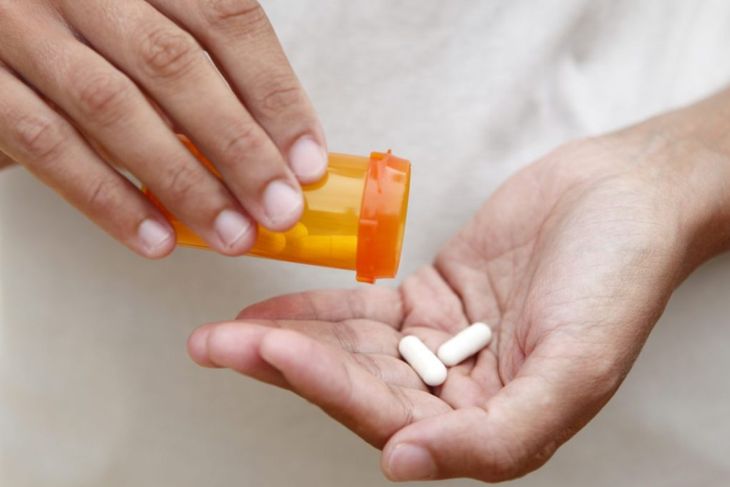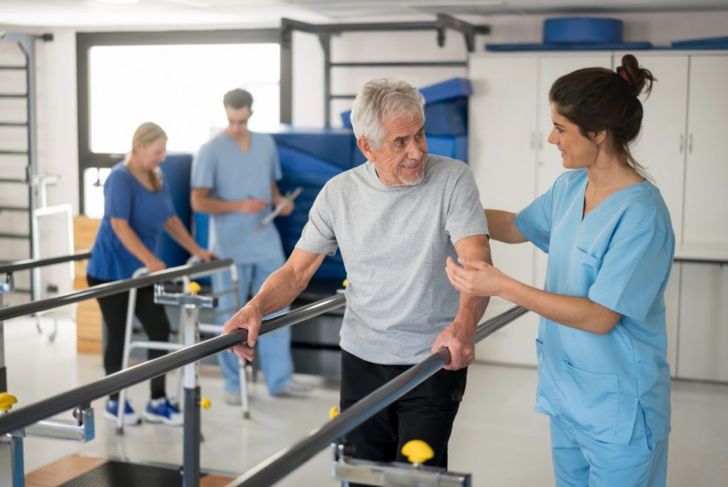Compound fractures, also known as open fractures, occur when a broken bone penetrates the skin, causing an open wound. This is a serious injury that requires urgent medical treatment. Compound fractures have a far higher likelihood of developing serious complications than fractures that do not break the skin. The more severe the wound is, the longer it will take to heal and the greater the chance of complications.
Causes of Compound Fractures
It takes a lot of force to break a bone severely enough for it to penetrate a person’s skin. Therefore, compound fractures usually occur as the result of a high-impact trauma. Road traffic collisions at higher speeds are one of the most common causes. Falls can also cause compound fractures, especially if the person has fallen from a considerable height. This type of injury can also occur due to sports-related accidents.
Symptoms
Apart from a visible open wound with bone protruding through, the most common symptom of a compound fracture is severe pain. There will also be significant swelling and bruising of the tissues surrounding the wound. The injured person will have very restricted movement or may be unable to move the affected body part whatsoever. If the fracture is severe, this may cause deformation and make the affected body part appear misshapen.
Grade I Compound Fractures
Compound fractures are classified using a three-grade system known as the Gustilo-Anderson open fracture classification system. This helps doctors assess the likelihood of infection and estimate healing time. Grade I compound fractures are the least severe, with a wound measuring 1 cm or less in diameter. The wound must be clean, free from foreign bodies and uncontaminated to be classified as Grade I. There must also be no indications of crushed tissue around the injury that the tissue around the injury is crushed.
Grade II Compound Fractures
Grade II compound fractures have a wound larger than 1 cm in diameter, and there will be moderate damage to the tissues surrounding the injured area. There should be no missing or flapping areas of skin. There may also be some moderate contamination of the wound site, making infection more likely than with a Grade I compound fracture. The fracture itself is likely to be more complex.
Grade III Compound Fractures
Grade III compound fractures are the most severe of this injury type. They usually happen when the injury occurs at high speed, the impact crushing the surrounding skin and soft tissues. There will also be a far greater amount of contamination of the wound site. This grade of compound fracture will expose more bone and soft tissue, and may also include damage to the membranes around the bones. Some people will experience damage to the blood vessels surrounding the injury as the result of a Grade III compound fracture.
Surgical Treatment
Before the doctor can treat a compound fracture, she will take x-rays to assess the extent of the injuries and plan treatment. The first stage of treatment involves surgically irrigating the bone and surrounding tissue to clean them. This is carried out under general anesthesia. During this process, the injury will be further assessed. The next step is called debridement. This involves removing any contaminants or foreign bodies from the wound site and removing any tissue that cannot be saved. This helps reduce the risk of infection. Finally, the bone will be stabilized by fixing it back into the correct position for healing. This may be done surgically using rods, plates or screws, or with an external device called a fixator.
Treatment with Medicines
People with compound fractures will also be treated with antibiotic medications. This helps prevent the development or spread of infection and makes serious complications less likely. Because the pain caused by a compound fracture is likely to be severe, doctors may prescribe strong painkillers to keep discomfort at a manageable level. The doctor may prescribe oral or intravenous drugs.
Recovery
Recovery time for compound fractures depends on the grade of the break, but regardless these injuries take much longer to heal than most types of broken bone. Where the fracture is very severe, or there have been complications in the healing process, recovery may take up to eighteen months. Once the injury has healed, the person is likely to experience stiffness, soreness, and weakness in the affected area. They may need treatment from a physiotherapist to restore muscle strength and a normal range of motion. A person with a healed compound fracture can resume regular activities, although they should continue to be cautious of placing excess strain on the affected bone.
Complications
The most likely complication of a compound fracture is an infection. This usually occurs if bacteria already on the person’s skin enter the wound site. Staph or strep bacteria cause most bacterial infections of open fractures. However, different infections may occur depending on the environment in which the injury occurred. Problems with healing and failure of bones to re-join are other possible complications of compound fractures. These will require further treatment and possibly surgery to correct.
First Aid Treatment
Compound fractures are a medical emergency, but while waiting for medical assistance, several first aid measures can keep the person stable. Caregivers should never remove foreign bodies from the wound site because this can cause serious bleeding. Covering the wound with a sterile dressing can help keep bleeding under control and prevent bacterial infection. The first aider should also be vigilant for signs of shock, which can be fatal. These include shortness of breath or rapid breathing, blueness around the lips, a faint pulse, or fainting.

 Home
Home Health
Health Diet & Nutrition
Diet & Nutrition Living Well
Living Well More
More